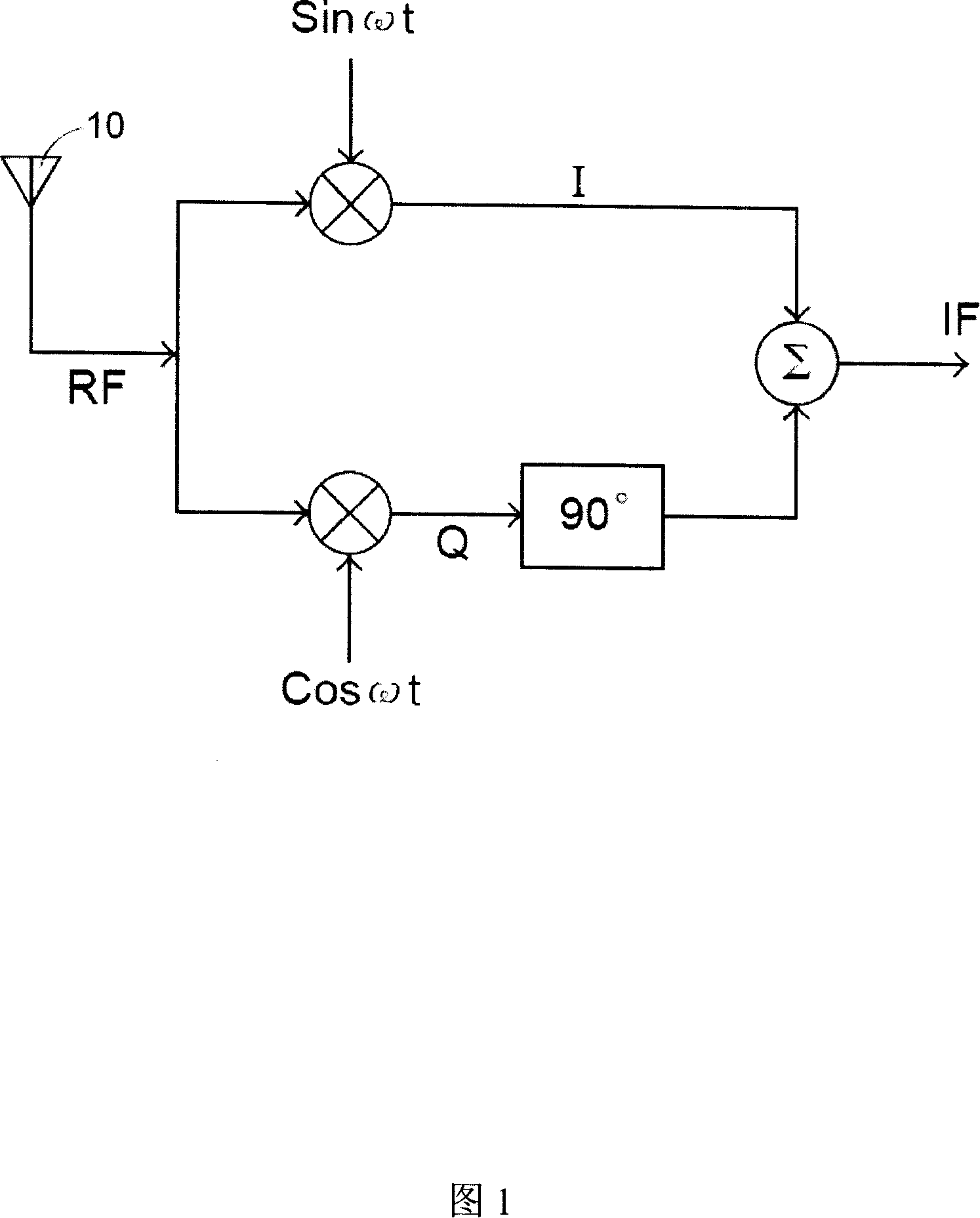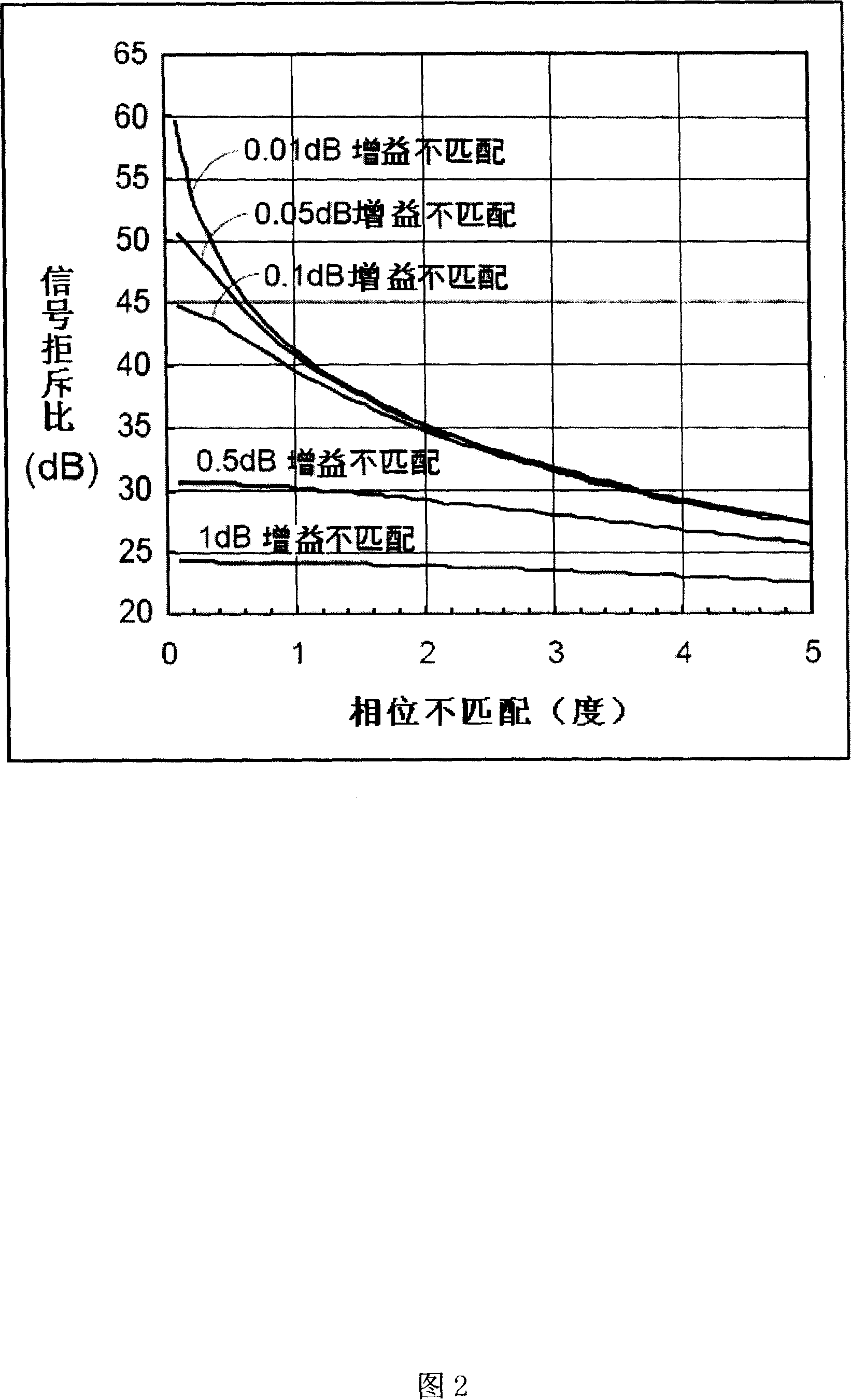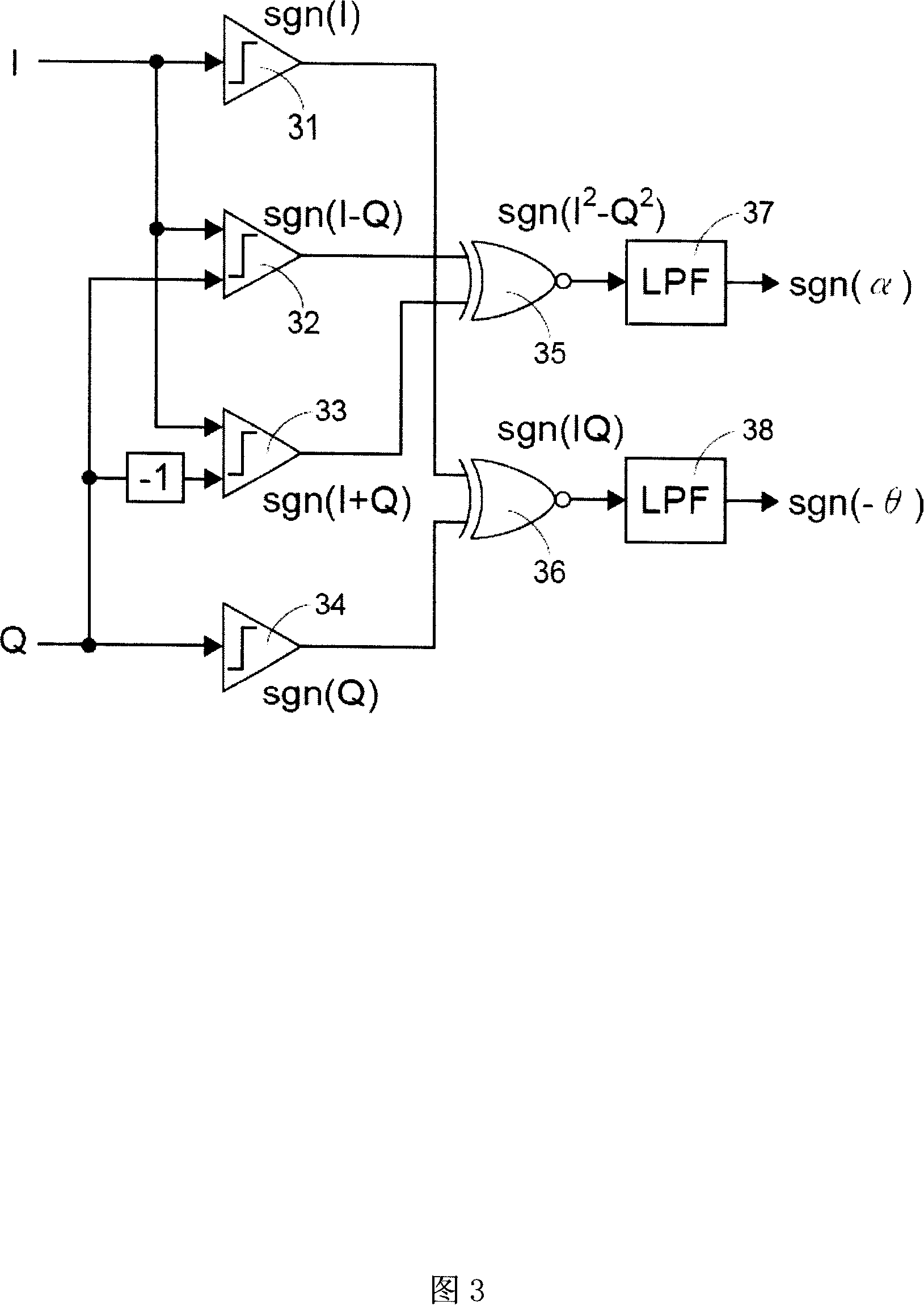Signal polarity detection device and associated method
A signal polarity and detection device technology, applied in the direction of electromagnetic field characteristics, can solve the problems of components affecting the correction results, phase imbalance, and failure to meet the requirements of wireless radio frequency signal receivers, etc.
- Summary
- Abstract
- Description
- Claims
- Application Information
AI Technical Summary
Problems solved by technology
Method used
Image
Examples
Embodiment Construction
[0045] FIG. 3 shows a functional block diagram for detecting an imbalance between a signal I and a signal Q. Referring to FIG. Assuming that α represents the gain mismatch value, and θ represents the phase mismatch value, and when α is much smaller than 1 and θ is small, the signal I and signal Q can be expressed by the following formulas:
[0046] I=(1+α)cos(ωt+θ)
[0047] Q=sin(ωt)
[0048] The product of signal I and signal Q can be expressed as:
[0049] I · Q = ( 1 + α ) cos ( ωt + θ ) · sin ( ωt )
[0050] = ( 1 + α ) ( cos ( ωt ) ...
PUM
 Login to View More
Login to View More Abstract
Description
Claims
Application Information
 Login to View More
Login to View More - R&D
- Intellectual Property
- Life Sciences
- Materials
- Tech Scout
- Unparalleled Data Quality
- Higher Quality Content
- 60% Fewer Hallucinations
Browse by: Latest US Patents, China's latest patents, Technical Efficacy Thesaurus, Application Domain, Technology Topic, Popular Technical Reports.
© 2025 PatSnap. All rights reserved.Legal|Privacy policy|Modern Slavery Act Transparency Statement|Sitemap|About US| Contact US: help@patsnap.com



